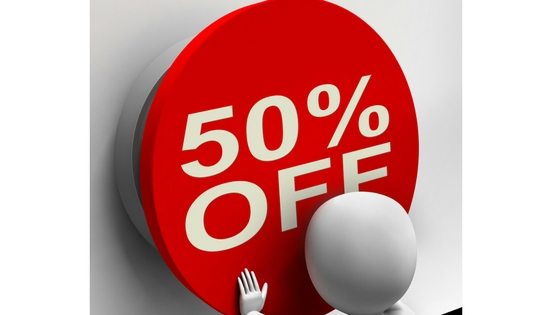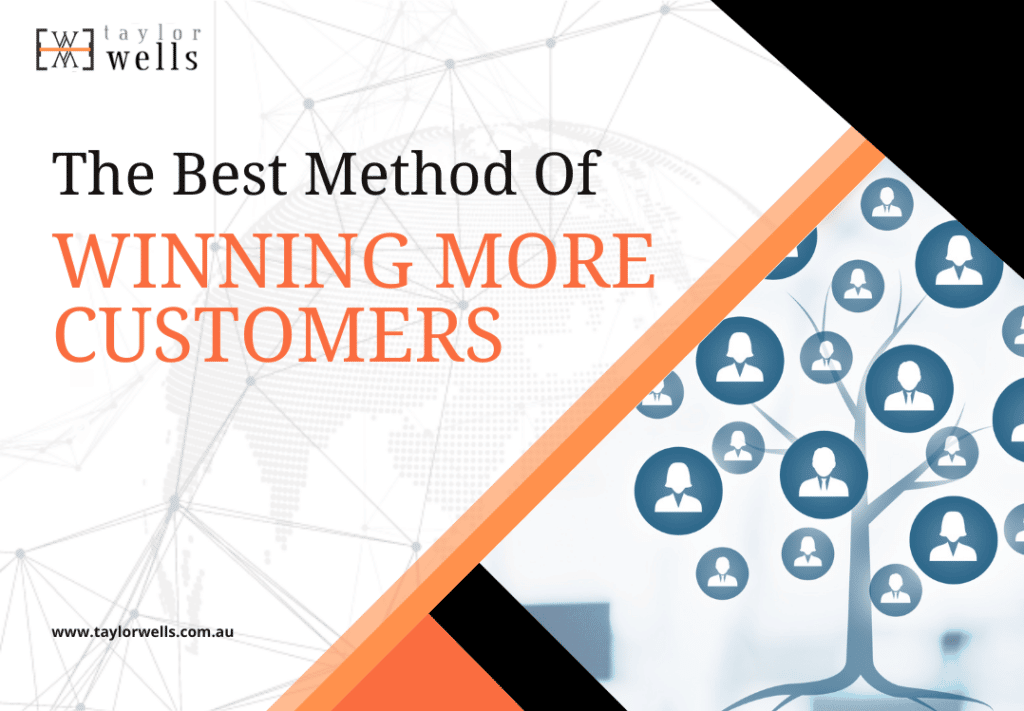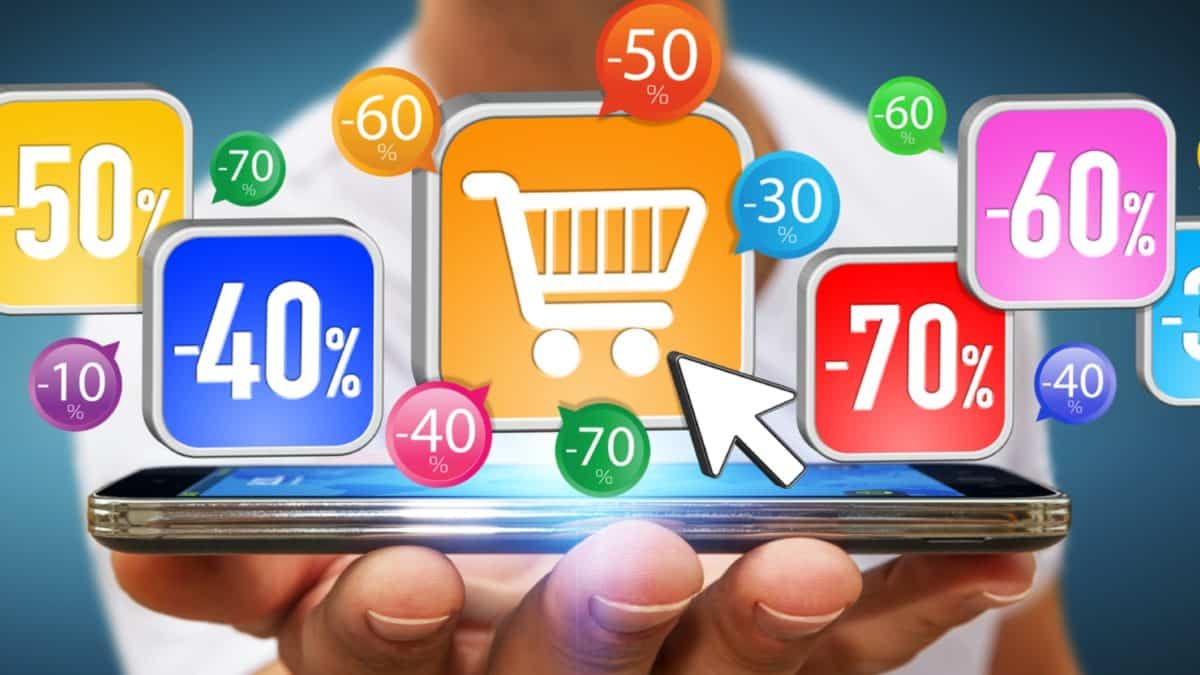
Psychological Pricing Strategy Advantages and Disadvantages 🖼️
Some believe that price is simply a matter of perception. Nevertheless, whether you are a startup or a long-established company, pricing remains one of the most complex tasks. Pricing managers look for ways to keep their businesses profitable and even thrive in times of economic difficulty. This is where we’ve seen businesses weighing the advantages and disadvantages of psychological pricing strategy. They want to know if it is a viable option for them.
>Download Now: Free PDF The Best Method of Winning More Customers
The problem is, though, there are still businesses that fail to properly assess the benefits and drawbacks of psychological pricing. As a result, there is a higher chance of setting unprofitable prices or using inconsistent price messaging that undervalues higher margin products and brands. If not addressed immediately, these issues can worsen and harm overall business performance and customer price perception.
In this series of articles, we are going to have an in-depth discussion of psychological pricing and how it can impact businesses from different industries. We argue that psychological pricing methods can be effective, but only for short-term gains. Businesses cannot rely solely on it to increase profit and expand.
At Taylor Wells, we believe that psychological pricing must be backed by an in-depth analysis of its advantages and disadvantages, sound decision-making, and strong commercial capability. By the end, you will know when it is preferable to use this pricing strategy and when it is best not to.
Table of Contents:
I. Psychological Pricing Strategy Advantages and Disadvantages
II. Psychological Pricing: Frame Value Through Pricing Techniques
III. Book Review on Priceless: (Psychological Pricing in Marketing) by William Poundstone
IV. 7 Most Common Psychological Pricing Strategies Used Across Industries
Psychological Pricing Strategy Advantages and Disadvantages
You saw a big sign on your favourite store or mall’s door or windows that read, “50% OFF, ONE DAY SALE!” What would you do? Do you walk past it or go inside? For sure, you’ll go in and take a look and find yourself buying things that you don’t really need.
Did it also ever cross your mind why most prices end in 99 cents? Like $9.99 instead of $10?
Well, these are some psychological pricing strategies designed to let customers spend more than they intend or a trick to make them purchase quickly. And psychology in 99 pricing is the oldest trick in the book.
Take for instance Apple’s strategy in pricing – they offered 99 cents per song in iTunes. Also, check the Kindle store and you will see lots of books with prices ending with 99 cents.
Though psychological pricing has its advantages to businesses such as getting more sales as it tricks consumers into making a quick purchase, there are also psychological pricing disadvantages in using this kind of strategy.
In this article, we will define psychological pricing. We will also discuss the psychological pricing strategy advantages and disadvantages. In addition, we will talk about the 6 most popular psychological pricing strategies that businesses use. We will also provide psychological pricing strategy examples so you will understand them better.
What is Psychological Pricing Strategy?
It is a pricing method where businesses set the prices slightly lower than a whole number. Our brain tends to round down the number instead of round up, reading prices from left to right. So, when you see an item priced at $9.99, you’ll feel that you’re only paying $9 instead of $10 though it’s closer to $10.
6 Most Popular Psychological Pricing Strategies
Behind each advertisement, promotion, discount, and deal out there, there is a corresponding psychological pricing strategy that businesses use. Business owners and marketers certainly deal with the process of pricing their products or services. However, many businesses still struggle with this process because they don’t have enough experience with what and how to charge people for their work even though they understand their customer’s needs.
Below are some common psychological pricing strategies that businesses can use in pricing their products and services:
-
The false sense of urgency
For sure you’re familiar with sale signs like “Big sale today only” or “One-day sale only” offering “BOGO or 50% discount”. There’s always a sense of urgency on these sale offerings which happens every weekend anyway in some stores.
These “one-day-only” sale signs are called artificial time constraints. The restrictions act as a driving factor for customers to spend. Customers are more likely to buy now rather than next week if they know that the offer is only temporary. Definitely, customers don’t want to miss out on such an obviously good deal. Thus, they purchase the product on impulse to avoid the feeling of regret or missing out.
For example, there’s a 50% off and a 12-hour-only coupon offer for a $1,000 winter coat to $500, surely, you will rush to the store to buy it.
What’s the psychological reason? The $1000 is the anchor price that psychologically forces you to purchase because you’re getting a huge deal at the $500 price point. In addition, the restriction on the promotion (limiting the time of the offer) drives you into buying it quickly. Admittedly though, these limited sales never truly end.
Studies show that people are more likely to pay $25 for an item priced at $50, than buying for the same item at a regular price of $25. What leads to the excitement of getting a good deal? It’s all about the “price framing” of the item that creates a perceived value.
-
The 99 pricing (Charm pricing)
The official name for all those 9s at the end of prices in the stores is charm pricing. Based on a study at MIT and the University of Chicago, prices that end in 9 create higher customer demand for products. Our brain reads from left to right. Therefore, when we see a price at $2.99, we see the 2 first and perceive the price to be closer to $2.00 than it is to $3.00. Basically, using prices ending in 9 makes the consumers believe that you’re offering a great deal.
There’s an opposite effect of the popularity of the psychology of 99 pricing. If prices ending in 9 signify a “value price”, prices ending in 0 indicate a “prestigious price.” For luxury items, for example, a diamond ring, it is better to price it ending in “0”. This gives customers the impression that they’re paying for something costly and valuable. As an example, notice most of the sales on Gilt Groupe’s flash sales. All of the “before” prices end in 0s or 5s while the “after” prices or discounted prices end in 7s, 8s, and 9s.
According to a study, on average, charm pricing can increase sales by 24% compared to the “rounded” price points. As a matter of fact, in one of the experiments conducted by some researchers, they tested regular women’s clothing items at the prices of $34, $39, and $44. Surprisingly, the item that was priced at $39, sold best than $34 and $44.
-
Innumeracy
Which is a better deal? “Buy one get one free” or “50% off on two items?” Most people would choose the first one even though they are both the same. Purchasing 2 products at a 50% discount is the same as buying full price for the first item and getting the second item free.
This is called innumeracy. Consumers don’t recognize or understand the basic math principles as they apply them to everyday life. Other ways where innumeracy is used are coupon design, percentage pumping, and double discounting.
One study from the University of Minnesota’s Carlson School of Management found that consumers prefer to receive something extra rather than a discount. Just like they would prefer a “buy one month and get the next free” than “receive 50% discount on the first month.”
-
Price design/appearance
The design of your prices on how you write it can also have a huge impact on how consumers perceive the value of your product/service. Notice the restaurant menu prices. Most of them are written in a smaller font and don’t have the zeroes at the end. They’ll look like “20”, instead of “$20.00”.
The reason for this type of design is that longer prices appear to be more expensive than shorter prices, even though they are just the same number. Subconsciously, longer prices take more time to read, thus, people will see it as expensive.
This is an easy strategy to use. It helps also to omit the “$” sign from your pricing as it makes the price longer. If you’re pricing at a whole number, leave out “.00” as well. If you want to combine this method with charm pricing, make the “.99” in a very small font compared to your main price.
-
Using 7 (plus/minus 2) words in the call to action
You’ve learned that using 9 in pricing is powerful. But how do you create a most engaging call to action for your pricing? You need to apply Miller’s Magic Number.
Cognitive psychologist George A. Miller found that the maximum amount of letters, digits, or words that humans can store at once is 7 ± 2. He discovered that for short-term memory, 7 is the limit of our capacity. This magic number 7 can also be expanded by categorising information into related groups. How to apply Miller’s Magic Number to pricing?
Let’s take Lyft as an example. Their ads are capable of drawing new riders and drivers, the reason why its active customers tripled over two years. Their Facebook ad reads, “Get up to $50 in Ride Credit” (with the Install Now button) below it. The “Install Now” call-to-action button is persuasive because it leads new customers straight to where they can claim their free $50 ride credit.
-
Useless price points (Decoy pricing)
Most often, customers use your own product/service for reference price.
Many businesses are certainly familiar with the infamous study of Dan Ariely, a behavioural psychologist and bestselling author of Predictably Irrational. He conducted an experiment where he offered 3 different subscriptions to the Economist magazine.
-
- 1st Option: Online-only subscription for $59
- 2nd Option: Print-only subscription for $125
- 3rd Option: Print & online subscription for $125
We will think that 2nd Option (print-only subscription) was a mistake. Anyway, who would select 2nd Option when you can get both online and print subscriptions for the same price?
But there’s an underlying motive for why 2nd Option is there. Ariely conducted a study to test his intuition. Indeed, the “print-only” subscription made a huge difference.
Without the 2nd Option, people couldn’t precisely compare the options. We don’t exactly know the price for web and print subscriptions. Definitely, most people will choose the “online-only” subscription if there’s no 2nd Option because it was cheaper. The second option is actually a decoy price.
The “print only” subscription helped people compare those two options. Seeing that the “print-only” option is priced the same as the “print and online” option, people could easily realise the value of the online and print subscription. Why not go for both if you’re just paying the same price with “print-only”? Thus, more people chose the more expensive one which is the 3rd Option (print and online subscription). The Economist generated a 43% increase in revenue.
Surprisingly, offering choices, however useless they are, helps people decide though they don’t know what they really want.
To let customers take advantage of the expensive version, you can take the same approach. Naturally, customers will compare those options especially when you offer different versions of your product/service.
>>>Read about: Cognitive Tests for Pricing and Commercial Teams
Psychological Pricing Strategy Advantages And Disadvantages
As with anything in life, psychological pricing also has its pros and cons. It can work well in a lot of situations but it can do more harm than good in some. Let’s examine some of the psychological pricing strategy advantages and disadvantages. Let’s start with the pros first.
Advantages
-
It boosts attention to your product.
Who can resist a 50% discount offer? Or marked-down items with before and after prices, like “from $100 to $89.99”. Having big, red signs advertising your product promotion will surely force people to go and check what you’re selling.
Charm pricing is the most common strategy used in this marketing category. Approximately 70% of the products sold in stores are influenced by charm pricing (sometimes called “.99 pricing”).
-
It makes the decision-making process simpler
Most psychological pricing strategies simplify the decision-making process for customers. Customers are cost-conscious, thus, one of their primary screening points is cost. With the discount or promotion laid out before them, consumers have less time to think about it because the offer is clear. This is good for retailers that thrive off of one-time sales.
-
It offers a high return
One-time sales can offer a high return on investments, especially during peak-volume seasons, like holidays. Promotions that attract the masses are likely to get a high return at the end of the day.
Another way is pricing a product higher when initially launched when demand levels are also high. By doing so, it will generate a higher return on investments made to introduce the item to the market.
Disadvantages
-
Deceptive
Some may accept the tactic as vital in doing business, however, some may see and perceive it as taking advantage of customers. Others may even feel manipulated.
Many of these psychological pricing strategies are based on the notion that customers are buying on impulse rather than well-researched thoughts. Customers who thoroughly think before purchasing will recognize manipulative pricing schemes. They will either control not to buy or leave your store for good and shop somewhere else. Customers who look for the cheapest price are loyal to the price itself and not to the company.
-
It affects a brand’s reputation
Price is the determinant of your product’s value. However, this is dependent on your customer’s judgement of your pricing. Like for instance, if you set rock-bottom prices just to trick your consumers into a quick deal, they will think your product is of low quality and expect the lowest price possible, whenever possible. Even worse, having cheap prices and perceived low-quality products will stop new customers from coming to your store.
It’s hard to overcome a poor experience, especially when it comes to pricing and not a poor customer service reaction.
-
No sales guarantee
Using psychological pricing tactics is not a long-term pricing solution. Well, it may increase your sales but only for a short period. Some consumers will not mind paying higher prices because they prefer a different brand. Just because you lowered your pricing does not mean you’ll get new customers. Thus, businesses should have a firmer and long-term plan in place.
The psychological pricing strategy’s advantages and disadvantages provide ideas that can help businesses with their pricing without sacrificing profit margins. Even though there are risks involved with this marketing strategy, it can also be an effective way to increase profits without a big investment.
Psychological Pricing Strategy Advantages And Disadvantages: Should a business use psychological pricing?
Not all of the above-mentioned tactics are manipulative. Nothing’s wrong with offering price value substitutes or sticking to price thresholds. If these strategies will help you to persuade your customers in the decision-making process and purchase a good product at a price that reflects your product’s value, then go ahead and adopt these strategies wisely.
However, if you use these tactics to sell low-quality products at super high prices, then forget it. Your customers will know sooner or later of the deception. Consequently, losing your customers forever.
There’s no denying that psychological pricing does work. The aim of this technique is to provoke an emotional response. May it be excitement for a low price or fulfilment of a need or a good value.
Therefore, any business thinking about employing this tactic should consider psychological pricing strategy advantages and disadvantages and analyse all points discussed above before adopting psychological pricing.
Implications Of Psychological Pricing Strategy Advantages And Disadvantages
- Psychological pricing may look like a sure win for your business but still, it relies on the idea that customers operate based on collective patterns of behaviour.
- You could lose credibility when customers figure that you use psychological pricing strategy with outright greediness.
- Since psychological pricing strategies are based on the belief that customers are buying on impulse rather than well-researched thoughts, customers who thoroughly think before purchasing will recognise manipulative pricing schemes.
- Price conveys the value of the product but it is dependent on the customer’s perception of the pricing. Setting super low prices to trick your consumers into a quick deal will compromise your product’s quality.
〉〉〉 Get Your FREE Pricing Audit 〉〉〉
Conclusion
Psychological pricing takes on many forms, therefore it might be hard to choose which strategy or strategies is/are good for your business. Don’t forget though to consider the psychological pricing strategy advantages and disadvantages.
According to a study, on average, charm pricing can increase sales by 24% compared to the “rounded” price points.
We’ve learned that using psychological pricing will boost attention to a company’s product, simplifies decision-making process and increase revenue.
We also discussed the demerits of psychological pricing that it’s deceptive, it ruins the reputation of the company’s brand and doesn’t offer a long-term guarantee in boosting sales revenue. Just remember the psychological pricing strategy advantages and disadvantages before implementing psychological pricing in your business.

Psychological Pricing Strategy Advantages And Disadvantages: Frame Value Through Pricing Techniques
Psychological pricing: Framing value with psychological pricing techniques
Do you study and compare consumer product prices across different brands and regularly update your pricing knowledge before you buy your weekly shopping?
Even with the help of online aggregator sites, I suspect that very few of us hone our Bayesian instinct every single time we visit the local supermarket.
Gaining acute price awareness across a broad spectrum of consumer goods takes a lot of time, focus, effort and dedication. Most people are either too busy, non-plussed or even blissfully unaware of how much they are influenced by the effects of psychological pricing techniques.
We can all be price-sensitive buyers. How sensitive can often depend on how we feel at a given point in time, what we are buying and when we buy it. Price sensitivity depends on a whole range of economics, cognitive, financial and emotional factors. Price sensitivity can even depend on what we are focusing on at any given moment in time (Cialdini, 2016).
In this article, I will explore the strong effect of psychological pricing on consumer buying decisions. I will discuss concepts like prospects theory, The Weber-Fechner effect, loss aversion (Daniel Kahneman Tversky) and the focusing illusion described in Nobel Prize Winners’ Daniel Kahneman’s latest research.
Throughout the article, I will give tips on how pricing and revenue manager teams can use aspects of these theories to help them frame value to boost revenue and maximise margin.
Emotional factors of psychological pricing
People like to think they make rational purchase decisions, yet the wide variations in our own responses to product pricing demonstrate that we are largely irrational decision-makers. Traditional economic theory has led us to believe (and for some time now) that we tend to make rational purchase decision most of the time.
An ever-increasing body of neuro-marketing research, however, shows that as consumers we are all enormously susceptible to our own subconscious drives, emotions and attention deficits.
Oftentimes, an effective and successful pricing strategy is based mainly on human psychology… which can really be bizarre.
Notice how pricing can affect customers in so many illogical ways, like for example, a high-priced product mostly creates a higher perceived value, thus, attracting more buyers. On the other hand, a low-priced product can turn customers away, perceiving it as cheap or less valuable.
In addition, just by having more than one pricing option can motivate customers to buy the more affordably priced item, especially when the other item seems very expensive. Moreover, a sense of product scarcity, (like for instance, an ad saying that there’s limited stock for that particular item on a given price) will urge more customers to buy that specific product.
If you observe, none of the examples given above has anything to do with the product’s intrinsic value or importance to the customer. Not even the price what the customer was hoping to pay. See? It’s all psychology.
Psychological pricing research
Nobel Prize winners Daniel Kahneman and Amos Tversky, for example, have advanced our knowledge on psychological pricing in their research on alternatives decisions or as they label “prospects.” A key result of their psychological pricing research is prospect theory value function, which describes how people feel about gains and losses, and more than this, the differential value we all place on gains or losses of various sizes.
There are two important aspects of the prospect theory value function which pricing teams need to know in order to frame value: 1) the connection with the Weber-Fechner Law and 2) the connection with loss aversion.
Psychological pricing principles
Weber-Fechner Law is an established and reliable psychological principle. It postulates that there are “diminishing returns” for the mental effects of a stimulus.” In other words, each additional unit of external stimulation will add less to the mental effect of the stimulus than its predecessor.
Applying the Weber-Fechner Law to psychological pricing would go as follows: adding a dollar to the price of an inexpensive item will make us feel more pain than adding a dollar to an expensive item.
The same pattern occurs for losses: Taking away a dollar from an inexpensive item will give you more immediate pleasure than subtracting the same amount away from the price of an expensive item.
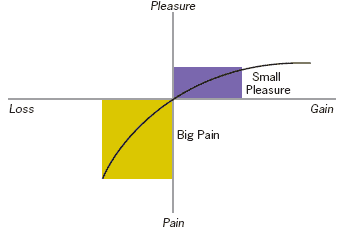
The diagram above shows how Prospect theory builds on the Weber-Fechner Law with the loss portion of the prospect theory value function equation. If you look at the loss portion of the prospect theory curve (above), you can see the curve sloping downward much more sharply than the gain portion of the function curves upward. The sharp downward slope is key to psychological pricing because it represents the moment we (as consumers) feel loss aversion.
What is loss aversion?
Loss aversion is our tendency to view a loss as more painful than the pleasurable feeling of an equally-sized gain. For example, if your annual salary as a pricing manager is $150K AUD and the company increases your base salary by $10K, you would feel pretty good. However, if your salary is $150K and the company decreased it $10K, you would feel bad, frustrated, confused and upset to the point of looking for a new job. This is because the loss of $10K in salary would physically give you more pain than the pleasure you would get from receiving a $10K increase in salary.
Loss aversion is a critical tenant of psychological pricing because it shows us the pain of paying – or how much it hurts us to pay a price – and since pricing teams cannot know the pain consumers feel from paying a particular price level from price elasticity analysis alone, loss aversion helps pricing and revenue management teams to interpret unusual price responses in certain groups of consumers based on their feelings of pain or pleasure.
The impact of focusing illusion on psychological pricing
Nobel Prize winner who coined Prospect theory value function has recently built upon loss aversion with his latest work on the focusing illusion (described in Cialdini’s latest book “Pre-suasion”).
The rationale of focusing illusion is that people only really attend to things that they think are important. More interesting still is that latest research by Kahneman finds that when we attend to things, they automatically become greater in importance than they actually may deserve.
Research by Bizer et al 2001, for example, supports this assertion by showing how our brains organise our thoughts and feelings so that the attitudes we focus on most readily are the ones that are most important to us. Similarly, Lim et al, 2011 find that when we focus our attention on a consumer product, the item’s worth increases.
The discussion on why people overvalue what they focus on in-the-moment comes back to how our brains naturally prioritise our feelings and attitudes in real-time (or as we feel as we think). In other words, when we look at an item, our brains will imbue more worth and value to that item. When we are not looking at the item our brains will not imbue the same level of worth and value to that item as it did before – i.e., the focusing illusion.
Even though Kahneman has not devoted much study to the focusing illusion, support from the consumer arena for Kahneman’s assertion can also be supported by a range of other consumer studies.
One such consumer study by Atalay et al, 2012 investigates why items placed in the centre of an array of brands on store shelves tend to be purchased more often. Key learning for pricing and revenue management teams may be that products in the centre of a shelf get more visual attention, particularly at the moment just before a choice is made and that central positioning predicts purchase decision.
Knowing what we now know about how our brains actually manipulate our thoughts and feelings in real-time (or as we focus on a given object or item): Do you think pricing teams have an opportunity to understand price responses in terms of high cognitive and emotional functioning / or attention deficits? Do you think there will be a time when our limited attention, emotion and natural brain functioning will eventually be used against us to get us to buy more without feeling the effects of loss or pain?
〉〉〉 Get Your FREE Pricing Audit 〉〉〉
Conclusion
Customers and consumers are not as rational as we like to think they are. More often than not, we are driven by unconscious thought processes that are easily influenced by our surroundings. Without even realising it.
We are all very susceptible to our emotions and feelings when we make a purchase. I think pricing teams sometimes forget to consider how much we are all constrained by our emotions, assumptions about the world and higher-order brain functioning capacity.
Many pricing teams fall into the trap of thinking that consumers think of prices like they do (see everyday low pricing). There is a tendency for pricing and revenue management functions in large businesses to think they can only anticipate consumer’s response to price changes in terms of rational price-related decision-making capabilities (i.e., their level of price knowledge, awareness and/or internal reference price or beliefs about prices).
It is likely that an overemphasis on logic, economics and competitive tension is created by a reluctance to explain emotionally based value drivers to the executive leadership team. However, even though irrational consumer behaviour is a difficult one to explain or prove, the secret to driving sustainable growth and profitability resides in the unpredictable territory of human emotion and risk aversion.
Don’t forget though the psychological pricing strategy advantages and disadvantages discussed in the first article above. They might help you with your pricing and buying decisions.
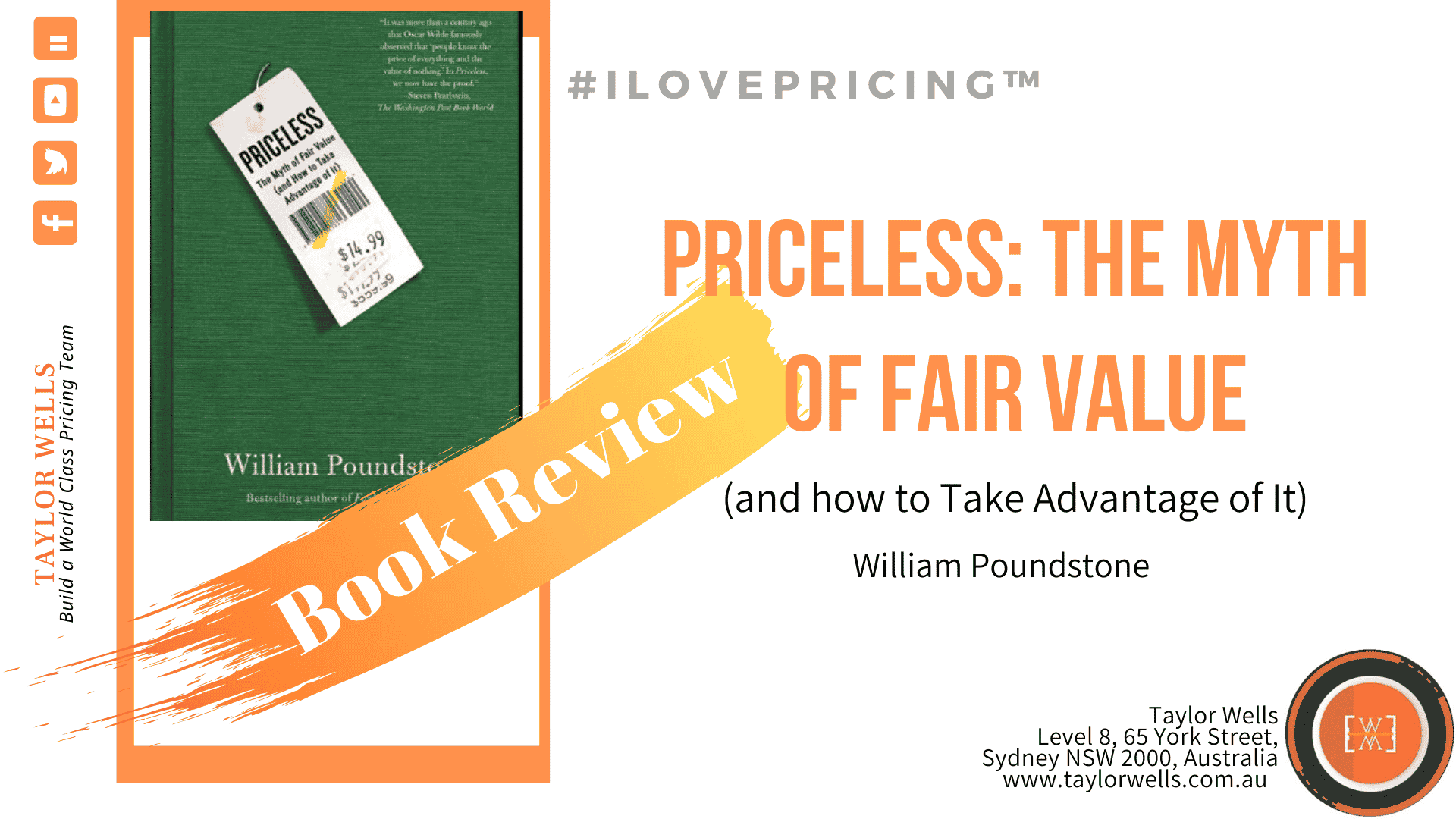
Psychological Pricing Strategy Advantages And Disadvantages And Book Review on Priceless 💎: (Psychological Pricing in Marketing) by William Poundstone
The psychological pricing in marketing, discussed in the Priceless book, author William Poundstone expounds the hidden psychology of value. He conducted psychological experiments in which people are unable to estimate “fair” prices accurately. And strongly influenced by the unconscious, irrational, and politically incorrect beliefs. It delves deeply in consumer psychology and pricing.
Experiment in psychological pricing in marketing
One such experiment was done using the example of two breadmakers, priced at $279 and $429 respectively, both manufactured by the same company. The $279 model was released first and sales were okay. However, after introducing the $429 model, sales for the cheaper model nearly doubled. It didn’t matter that sales for the more expensive version were lukewarm. The very presence of the $429 model made the cheaper version more attractive. It’s called anchoring. The purchase heavily swayed by that first choice.
Anchoring is so effective that almost anyone selling anything anywhere is making use of it. By creating a reference point, sellers are priming buyers by providing them with a kind of standard so the focus becomes the difference in price and the value offered, as opposed to the price itself.
When asked in research experiments, the average estimate for the first choice was above 45 per cent. Tests showed the sensory systems are highly dependent on contrast to create meaning. Like the price difference of two types of breadmakers. These are the psychological price points.
What is psychophysics?
The book explains that much of the work on modern-day pricing theory started in a still obscure field known as psychophysics. Psychophysics is the scientific study of the relationship between stimuli and the sensations and perceptions evoked by these stimuli.
It deduces that as the size of the purchase increases, subjects would be more willing to buy additional smaller items. Small extra purchases should seem like minor expenditures when they follow larger purchases. In addition, it found that subjects responded not only to actual changes in purchase size. But also to changes in the presentation or framing of a purchase.
It didn’t take long for marketers to apply these findings. “Price consultants” advise retailers on how to convince consumers to pay more for less. And negotiation coaches offer similar advice for business people cutting deals.

Psychological Pricing Strategy Advantages And Disadvantages: The new psychology of price
The new psychology of price dictates the design of price tags, menus, rebates, “sale” ads, cell phone plans, supermarket aisles, real estate offers, wage packages, tort demands, and corporate buyouts. Prices are the most pervasive hidden persuaders of all. Rooted in the emerging field of behavioural decision theory, “Priceless” should prove indispensable to anyone who is into negotiating price.
The benefits of psychological pricing clearly show here as to “persuade” the price is fair.
〉〉〉 Get Your FREE Pricing Audit 〉〉〉
Psychological Pricing Strategy Advantages And Disadvantages: Price is not absolute in psychological pricing in marketing
The lesson in Poundstone’s book is that price is not absolute; because price is really just a number. Numbers understand in relation to one another.
What this means is that people are more sensitive to the differences between numbers and not to the number itself. Given that most buyers have no inkling about the actual cost that went into manufacturing the product they are thinking of buying and what are the psychological price points. And therefore, unable to make an informed decision about whether the asking price is fair.
What’s particularly interesting in the case of luxury goods is that certain products are so specialised. That companies like Whole Foods, specialising in organic products can charge prices that wouldn’t normally be noticed. Because these products often don’t have an effective reference point. Consequently, making it difficult to find how fair the price tag actually is or not.
Herein lies the meat of the problem: people’s perception of what’s fair is often contradictory. Hence, rarely in line with classical economic models.
Fairness depends on perception, which varies for different people, hence the implied myth of fair value. Therefore, there is no clear consensus between customers about what the price of a product ought to be. And often the same customers will make contradictory decisions depending on their own experience as they make a purchase.
The difference in approach to a transaction between buyers and sellers. How people view losses and gains differently are loosely discussed throughout the book. Poundstone concludes with the opinion that “we spend our lives searching for the lowest price, the highest salary, the most money.”
We highly recommend that you read this book on psychological pricing in marketing.
On the Priceless book review, we give this 4 out of 5. A good starter book to learn more about psychological pricing.

7 Most Common Psychological Pricing Strategies Used Across Industries🐒
More businesses are using psychological pricing strategies to influence their customers’ purchasing decisions and persuade them to spend more money on their products and services. Rising inflation is a major driving force behind this trend, as it alters customers’ purchasing habits and value perceptions. This demonstrates how important pricing decisions are and how they can have a significant impact on profitability.
The problem is, though, the use of psychological pricing can also have irreversible downsides. Consequently, some popular methods can’t support long-term growth, may cause brand and product devaluation, and drive customers away.
In this article, we are going to discuss seven of the most common psychological pricing techniques businesses from various industries use. We delve into their uses. Then weigh their pros and cons. We argue that psychological pricing methods can work but businesses can’t rely on it alone to sustain their revenue generation and growth.
At Taylor Wells, we believe that every pricing strategy must be backed by in-depth analysis, sound decision-making, and strong commercial capability. By the end, you will have a thorough knowledge of the different types of psychological pricing and know if they’re right for your business
An Evaluation Of The Various Psychological Pricing Strategy With Advantages And Disadvantages
Businesses use a variety of pricing strategies to increase the appeal of their products, boost demand, and drive more sales. One of them is psychological pricing. Let’s take a closer look at this pricing strategy.
What is psychological pricing?
Psychological pricing is a business strategy that uses the product and/or service prices to affect a customer’s spending or purchase behaviour in order to achieve more or higher value sales. This strategy’s fundamental objective is to satisfy a customer’s psychological desire for something, be it saving money, investing in the best quality item, or getting a great deal. This is done on the basis of psychological theories or the subconscious’s ability to persuade customers to increase their spending.
Effective psychological pricing is typically the result of a collaborative effort across multiple business functions, such as sales, marketing, and pricing, to take advantage of the opportunities in market trends and develop appealing offers for customers.
What businesses typically use psychological pricing?
There are psychological pricing strategies everywhere in all industries. Small and medium-sized businesses use it, as do some of the world’s largest corporations, including Amazon, Hershey, Motorola, Apple, and Costco. Why is the pricing mechanism so popular? Is it truly beneficial to businesses, or is it merely a temporary solution?
Discussion On Psychological Pricing Strategy Advantages And disadvantages
By using the right pricing strategies and tactics, marketers can convince customers to buy more, and even pay more for their products and services. Here are some of the most common pricing psychology strategies.
1. Odd / 9-ending pricing
Odd pricing, also known as 9-ending pricing, is a pricing strategy in which prices are set at a psychologically appealing number, usually ending at $0.99 or $9.99. This method is widely used because it can lead customers to think they are getting a good deal rather than focusing on the total amount they pay.
Many businesses believe that customers perceive a price of $5.99, for instance, as much lower than a full $6. As a result, they fall back on this pricing strategy. Prices ending in odd numbers can be found almost everywhere from coffee shops, to jewellery stores, and car manufacturers.
2. Anchoring
Anchoring is a tactic in which a product or service is contrasted to a more expensive option in order to make the lower-priced option appear more favourable. This method is used to bait customers into believing they are getting a better deal.
A premium storekeeper, for example, will display an expensive brand first, followed by cheaper alternatives. This makes subsequent products seem much more relatively affordable, which can increase sales.
3. Decoy pricing
Pricing and marketing teams use decoy pricing to direct customers’ attention to the most profitable product or service for the business. A café, for example, might charge $4 for a small coffee, $6 for a medium, and $7 for a large one. The medium serves as a decoy in this situation, making the large appear to be a better deal. This works with the assumption that most customers would rather pay $7 for a large coffee instead of $6 for a medium, which enables the shop to boost sales.
4. Framing
Framing is a marketing and pricing technique in which words and language are used to sway customers’ price perceptions. For instance, a product might be presented as “budget-friendly” or “best value”, instead of just suggesting it is cheap. We usually see this tactic used by FMCG companies and supermarkets.
5. Reframing
Reframing alters the reference frame in which the price is indicated. For example, rather than declaring a streaming service subscription costs $120 per year, a service might identify itself as $10 per month. This makes the service appear inexpensive and helps to increase sales. This pricing strategy merely modifies the way the price is conveyed (no price increases or discount promotions), but it can help companies increase their revenues significantly.

6. Bundling
Bundling is the practice of offering multiple products or services at a lower price when bought together. This strategy is used to entice customers to purchase more because they get a better deal. Disney is one of the most common examples of bundling. Disney bundle plans include either Disney+ and Hulu or Disney+, Hulu, and ESPN+ subscriptions at a special discount price in comparison to the subscription price of each when purchased separately.
7. Free Trials
Giving out free trials can be an excellent way to encourage customers to try a product or service before purchasing it. Some businesses believe that customers are more likely to buy products they have previously used. Thus, this tactic is employed to promote customer loyalty. For example, in the confectionery and fragrance industries, this psychological pricing strategy is used by handing out free samples. In some cases, these businesses are able to generate more sales.
Psychological Pricing Strategy Advantages And Disadvantages
We just discussed some of the most common pricing psychology strategies used by businesses. By using these strategies, marketers and sales teams can influence customer’s buying decisions and increase their sales. Like most pricing strategies, psychological pricing comes with its fair share of pros and cons. It can work tremendously well in many situations, but in some, it can do more harm than good.
Psychological pricing strategies can help businesses in a variety of ways. It can, for example, increase interest in your products and services. It simplifies the decision-making process. Consumers have less time to think about a discount or promotion when it is laid out in front of them. Furthermore, psychological pricing can provide a high return on investment, particularly during high-volume seasons such as the holidays.
Nonetheless, psychological pricing is not a perfect strategy. Your product’s value is determined by its price. Some may accept the method as necessary for doing business, while others may see and perceive it as taking advantage of customers. Others may even feel deceived. Besides that, employing psychological pricing strategies is not a long-term pricing solution. It may only increase your sales for a limited time.
Implications Of Psychological Pricing Strategy Advantages And Disadvantages
Before implementing psychological pricing, businesses must weigh the benefits and drawbacks. Despite the downsides, there are times when psychological pricing can benefit businesses. Hence, experimenting is worthwhile. Just remember to plan ahead of time and proceed with caution. Learn about your customers while building commercial capability to support your pricing initiatives.
Strengthen your commercial capability. Our findings show that when a business builds and embeds commercial capability across the business; bolstering its internal pricing skills and capabilities to build a sustainable pricing system, it can generate at least 3-10% additional margin each year while protecting hard-earned revenue and volume. This is at least a 30-60% profit improvement straight to the bottom line.
You must also have a functioning and skillful pricing team within your organisation. Our findings show that with the right set-up and pricing team in place, incremental earnings gains can begin to occur in less than 12 weeks. After 6 months, the team can capture at least 1.0-3.25% more margin using better price management processes. After 9-12 months, businesses often generate between 7-11% additional margin each year as they identify more complex and previously unrealised opportunities, efficiencies, and risks.
〉〉〉 Get Your FREE Pricing Audit 〉〉〉
Bottomline: Psychological Pricing Strategy Advantages And Disadvantages
Psychological pricing has advantages and disadvantages. It can draw attention to your product, simplify customer decision-making, and provide a high return. However, it can also lead to an inaccurate perception of value. Moreover, if customers think your strategy is deceptive, it can harm your brand’s reputation. Besides, psychological pricing does not always guarantee an increase in sales.
Businesses must have a clear understanding of who their target market is. Then, determine whether or not this customer group will find psychological pricing appealing. If you discover that psychological pricing may work for you, make sure you have the commercial capability to put it into action. Finally, businesses can develop appealing offers with prices that capture customer value drivers with the support and expertise of a pricing team.
For a comprehensive view on building a great pricing team to prevent loss in revenue, Download a complimentary whitepaper on How to Build Hiring Capability To Get The Best Pricing Team.
Are you a business in need of help to align your pricing strategy, people and operations to deliver an immediate impact on profit?
If so, please call (+61) 2 9000 1115.
You can also email us at team@taylorwells.com.au if you have any further questions.
Make your pricing world-class!
Related Posts
Leave a Reply Cancel reply
Categories
- marketing strategy (20)
- Organisational Design (14)
- Podcast (114)
- Pricing Capability (68)
- Pricing Career Advice (10)
- Pricing Recruitment (15)
- Pricing Strategy (199)
- Pricing Team Skills (10)
- Pricing Teams & Culture (15)
- Pricing Transformation (25)
- Revenue Model (10)
- Sales Effectiveness (15)
- Talent Management (5)
- Technical Pricing Skills (29)

